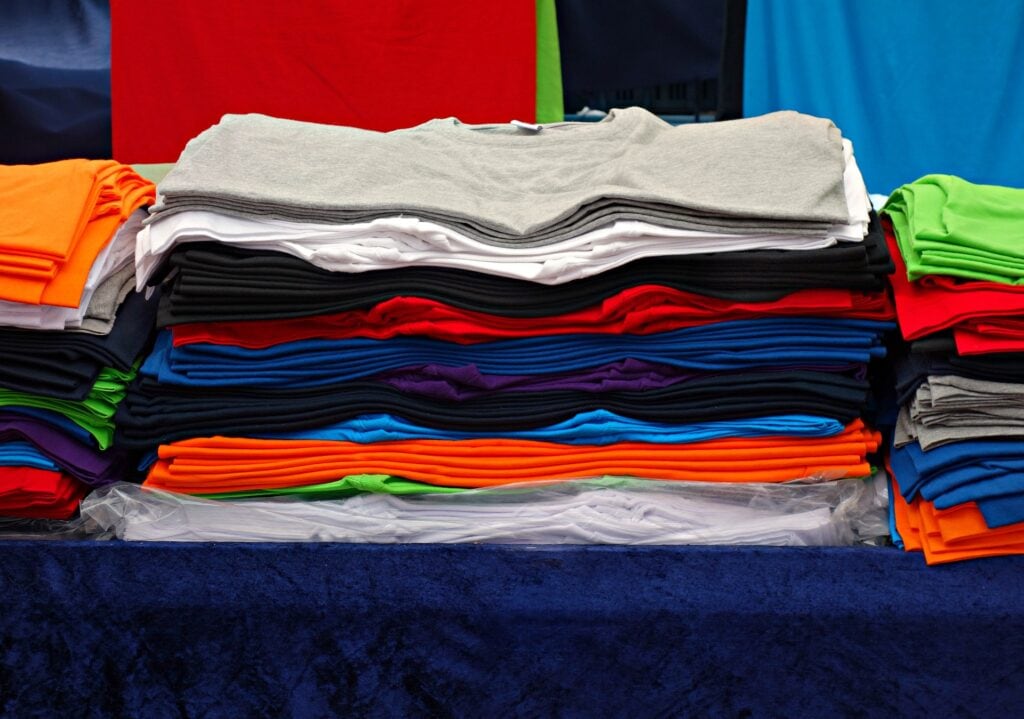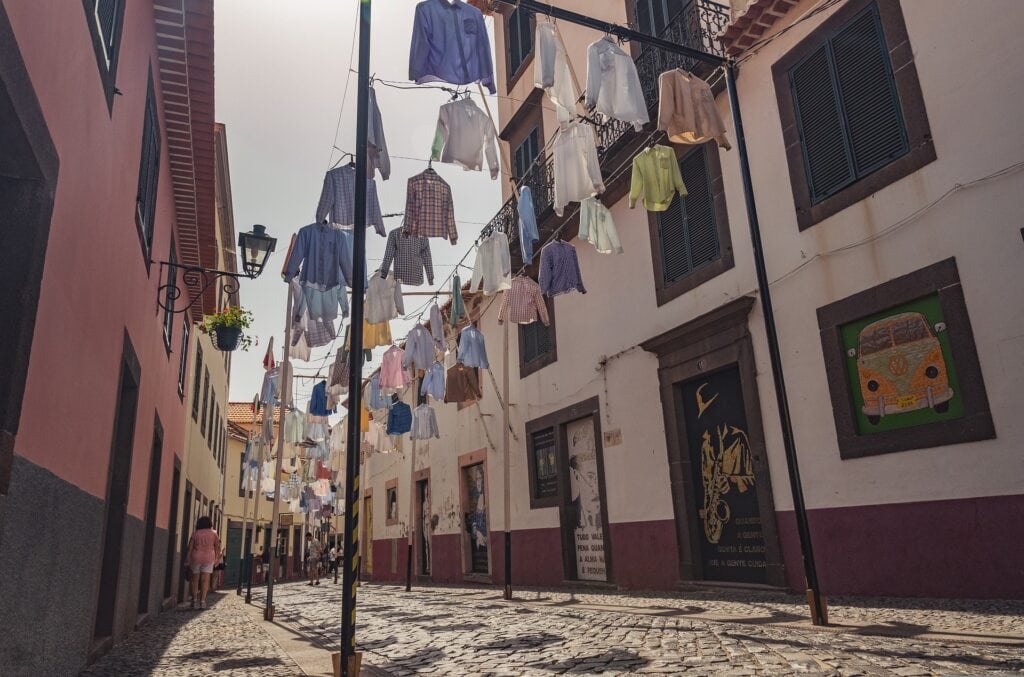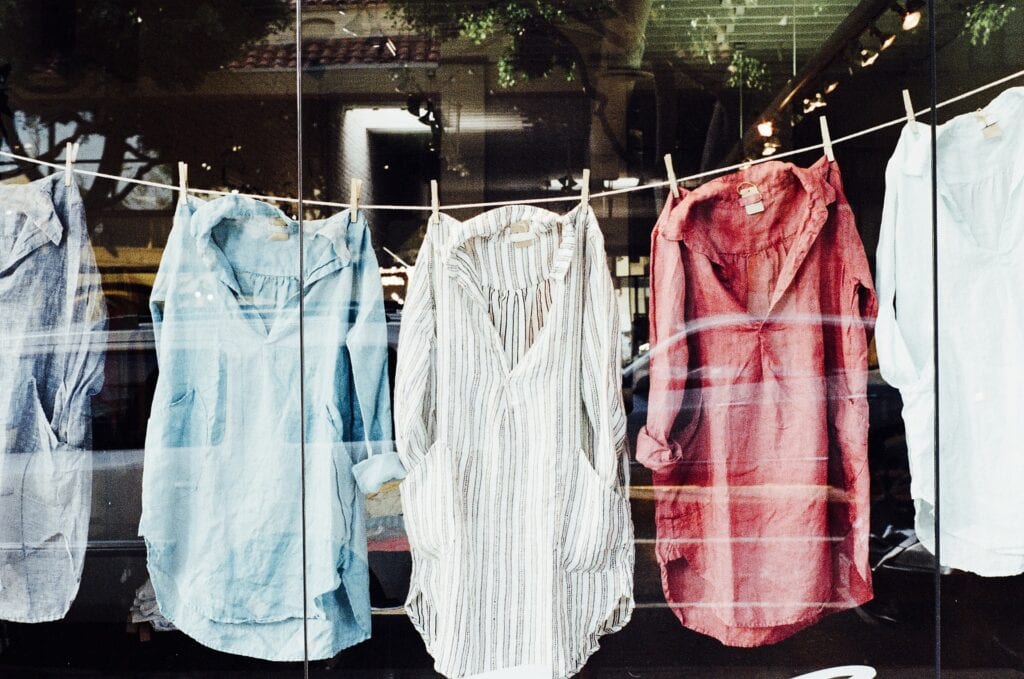How Much Water Is Needed to Make a T-Shirt? Science, Conservation, & FAQ
-

- Last updated:

Part of sustainable development is conserving a resource as vital as water. Water is life, and while a huge population of the world is privileged to have this refreshing resource at their beck and call, some people struggle to get an adequate amount of water.
Research shows that only about 81% of the world’s population has access to safe drinking water at home. This leaves about 2 billion people in the world with no access to safe drinking water. With these statistics, it is easier to see why water conservation is and should always be a leading topic all around the globe.
As humans that are conscious of our environment and interested in sustainable development, a lot of us naturally try to conserve water. However, others are forced to save water in certain situations because of its glaring depletion in the environment. For instance, California recently entered a brutal drought situation that affected its reservoirs and snowpacks, forcing the governor to reduce residential water usage by 15%.
About 2,700 liters of water are used to produce one cotton T-shirt. If you want to know why T-shirts consume such a huge amount of water and how we can aid the situation, read further.
The Science Behind T-Shirts and Water Consumption

To understand this unbelievable fact, we have to understand how T-shirts are made. But first, let us do a little calculation.
The National Health Service (NHS) has recommended about 1.9 liters of water daily per individual. Therefore, if a person sticks to this recommendation, they should have consumed about 2,700 liters of water in 900 days. This implies that the water used in the production of one T-shirt would otherwise serve a person for about 900 days.
How Are T-Shirts Produced?
A lot of processes are involved in producing the finished product, which is a cotton T-shirt. First, there is the growing of cotton, which is the fabric for the T-shirt, then there is the manufacturing process and the dying process.
The water consumption begins from the process of growing cotton. Cotton is famous for being one of the most thirsty crops and the only non-food crop to make the list of top 10 water consumers. Each cotton plant needs about 10 gallons of water for its maximal yield. The full season of the yield of a cotton plant is about 180 days. Therefore, in perfect condition, a cotton plant will need about 30 inches of water for the full season.
When cotton is being produced for commercial purposes, it is produced in very large quantities. As a plant, cotton thrives amid a crowded field, and an acre of land can contain about 40,000 to 45,000 plants. This is the major reason for the large-scale use of water in the production of the cotton plant.
Other processes like the cotton plant processing, shirt manufacturing, and dyeing process also require a lot of water. For example, dyeing a cotton fabric takes about 20 to 40 gallons of water for every two pounds or per kilogram.
Now, the manufacturing process that converts a cotton plant to a cotton shirt is another major source of water consumption. To produce 1 kg of usable cotton, you will need about 5,283 gallons of water which is about 20,000 liters of water. Keep in mind that 1 kg of usable cotton can only produce one T-shirt and one pair of jeans.
Imagine the amount of water that will be consumed by the time this is over. Now, remember that cotton T-shirts require a good wash too. So a lot of gallons of water go into the proper laundering of T-shirts.
Effects on the Environment

A T-shirt is the one piece of clothing that you are sure to find in the closet of everybody. If 2,700 liters of water go into the production of one T-shirt, just how much water does your closet consume?
Also, the lifespan of clothes is reducing quickly. Currently, in countries like the UK, a T-shirt has a lifespan of about 2.2 years. After this time, it mostly ends up in the garbage or incinerators. What a waste!
There are a lot of beliefs about the abundance of water on earth, and this might inadvertently spur the waste of water. However, we should have in mind that about 97% of water available to us on earth is salty, and 2% is mostly snow and ice. This leaves us with about 1% of water accessible to the world. Furthermore, of the 1% that we have, 70% is used to grow crops. This means that the amount of water accessible to us is gradually being depleted.
The 3 Steps How to Help in the Conservation of Water
This is a battle that must be fought collectively. We must all be intentional about conserving water, as a scarcity of water will affect everyone accordingly. Here are some ways to conserve water.
1. Use Conservative Watering Practices
This is especially for cotton farmers. We understand that cotton requires a lot of water, but there are ways to distribute adequate water to the cotton plant.
- Avoid overhead watering with sprinklers as this can lead to evaporation and prevent the water from getting to the root of the plant.
- Try subsurface watering; it is very effective.
- Infrequent but deep watering is more effective than frequent but shallow watering.
2. Extend the Lifespan of Your Clothing

By wearing or using your old cotton T-shirt longer, you can reduce the water footprint of the fabric. In addition, your fabric can last longer you if you wash it by hand or on a gentle cycle and air-dry.
3. Organic Cotton Fabric
Organic cotton is grown without chemicals, and this positively affects the fabrics made from it. Organic cotton fabric has less impact on the air and uses 88% less water.
Conclusion
Amazingly, about 2,700 liters of water are used to produce just one cotton T-shirt. This is a startling statistic, as this is technically enough drinking water to last a single person a couple of years.
With our collective efforts, we can save more water and be active participants in sustainable development in our environment today.
Featured Image Credit: Pixabay
Contents


